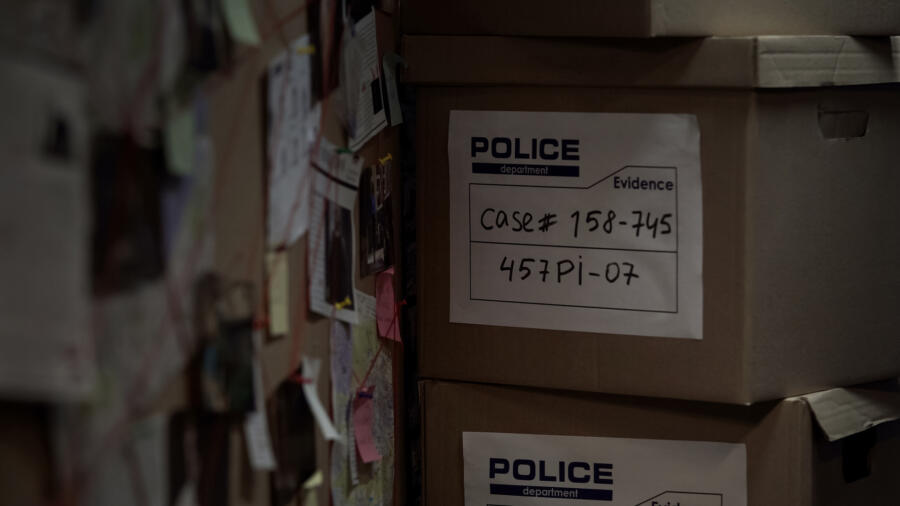A Career That Didn’t End with Retirement
For Joe Kennedy, solving homicides was never just a job—it was a calling. A seasoned investigator with the Naval Criminal Investigative Service (NCIS), Kennedy founded the agency’s first Cold Case Homicide Unit, chasing down murderers from the remote corners of the Philippines to the war-torn streets of Fallujah. But when he retired, he didn’t stop.
Instead, he went rogue—in the best way possible.
In 2014, Kennedy founded the Carolinas Cold Case Coalition, an elite, underground network of active and retired homicide investigators. Their mission? To solve the coldest of cases—quietly, anonymously, and without fanfare. These aren’t TV detectives. They work behind the scenes, outsmarting killers who thought they had gotten away with murder.
Why Do Cold Cases Stay Cold?
There are currently over 285,000 unsolved murders in the United States—cases that have lingered for over a year or been handed off to new detectives without any breakthroughs. The odds of solving one? Just 1 in 5 finds a new suspect, and only 1 in 100 leads to a conviction.
Why?
Kennedy explains the heartbreaking reality: “Sometimes there’s just no evidence. No DNA. No witnesses. And the few leads that exist? They disappear over time.”
Memories fade. Witnesses get scared. And confessions—often the most damning form of evidence—rarely come. Worse still, overworked detectives juggling dozens of cases may miss the very clue that could blow the case open.
“Listen to the Scene”: The Cold Case Investigator’s Creed
Kennedy believes that every murder scene speaks—but only to those willing to listen.
One of his earliest cold case successes came in 1994. The case? The murder of a U.S. Navy officer in St. Thomas. The file was dead cold. But Kennedy didn’t jump to interviews or scene re-creations. Instead, he read—reports, witness statements, autopsy notes—anything with ink on it.
For 20 days, he did nothing but study. And on Day 33? The case was solved. Not through luck, but through patience. A witness’s recurring nightmares, dismissed by earlier investigators, became the crack in the case.
“Cold-case work isn’t glamorous,” Kennedy admits. “Sometimes it’s just long nights of staring at pages, hoping a single detail jumps out.”
The DNA Revolution: Science Finally Catches Up to Crime
In the ’90s, solving a crime with DNA required a visible sample—blood, semen, or saliva the size of a quarter. Today, investigators can extract usable DNA from as little as 20 nanograms—a speck smaller than a grain of sand.
Time, once a killer’s ally, is now working against them.
The real game-changer? Forensic genetic genealogy. The same tools people use to explore their ancestry now help detectives hunt killers.
Here’s how it works:
- DNA from a crime scene is uploaded to public genealogy databases like GEDmatch.
- A partial match to a distant relative can be enough to start a family tree reconstruction.
- Genealogists narrow down potential suspects—sometimes to a handful of siblings or cousins.
- Investigators go covert, collecting discarded items like coffee cups or cigarette butts.
- DNA from the trash is matched to the crime scene, confirming the killer’s identity without them ever knowing they were being hunted.
The process helped capture the Golden State Killer—a serial murderer who had haunted California for over 40 years.
The Carolinas Cold Case Coalition: Justice in the Shadows
When Kennedy retired, the calls didn’t stop. Police departments across the country were desperate for help on stalled cases. Kennedy had an idea: assemble a secret task force of seasoned cold-case experts—investigators who didn’t want fame or headlines. Just justice.
Thus, the Carolinas Cold Case Coalition was born.
Made up of former homicide detectives, forensic analysts, and investigative specialists, this anonymous collective works behind the curtain, offering expert support to active law enforcement teams. They advise. They analyze. And sometimes, they quietly solve the unsolvable.
Their work has helped bring closure to families who waited decades for answers. In many cases, they re-examine every detail, patiently rebuilding a puzzle piece by piece until the truth is finally clear.
The Future of Cold-Case Work
The explosion of DNA technology and open-source genealogy tools has rewritten the rules of investigation. But even with cutting-edge science, Kennedy warns that technology alone won’t close the case.
“You still need someone who understands human behavior,” he says. “Someone who knows how to read a lie in a blink. Someone who can find the missing emotion in a murder file.”
That’s where the Coalition shines. It’s not about badges or jurisdiction—it’s about experience, instinct, and relentless dedication.
The Quiet Heroes Behind Unsolved Cases
While Hollywood portrays cold-case detectives as lone wolves chasing ghosts, the reality is far more disciplined—and infinitely more human.
Behind the headlines, behind the breakthroughs, are teams of unsung heroes like Kennedy’s coalition. They don’t seek fame. They don’t want recognition. What they want is truth. Closure. And for every name on a forgotten file to get one final chance at justice.
FAQs
What is a cold case?
A cold case is a murder or serious crime that remains unsolved for over a year or has no viable leads, often after being reassigned to new investigators.
How many cold cases exist in the U.S.?
There are currently over 285,000 unsolved homicide cases in the United States.
What is forensic genetic genealogy?
It’s a method where DNA from a crime scene is used to find relatives in public genealogy databases, helping identify unknown suspects.
Who is Joe Kennedy?
Joe Kennedy is a former NCIS investigator who founded the Carolinas Cold Case Coalition to assist in solving unsolved murders after retirement.
How does the coalition operate?
The coalition works discreetly, offering support and expertise to law enforcement agencies handling cold cases—often anonymously.
What made the Golden State Killer case so important?
It was the first major case solved using forensic genealogy, demonstrating the powerful potential of combining DNA science with family tree analysis.

